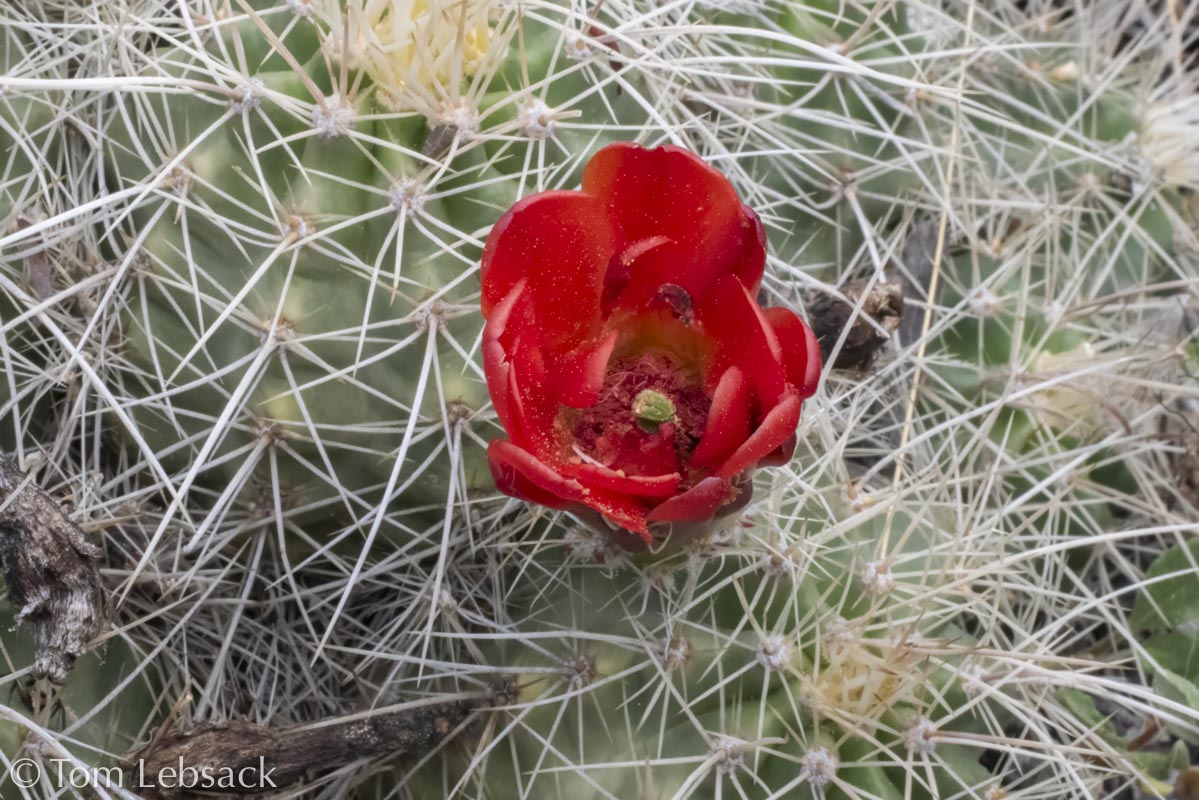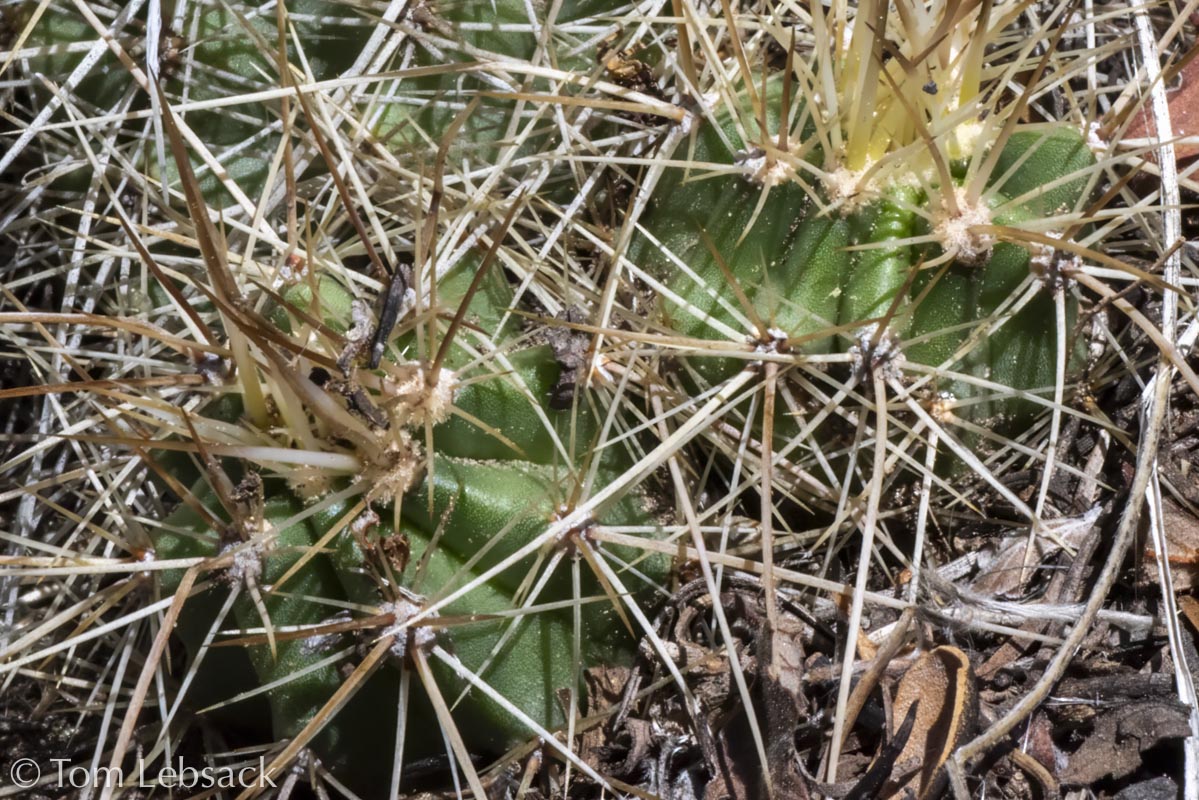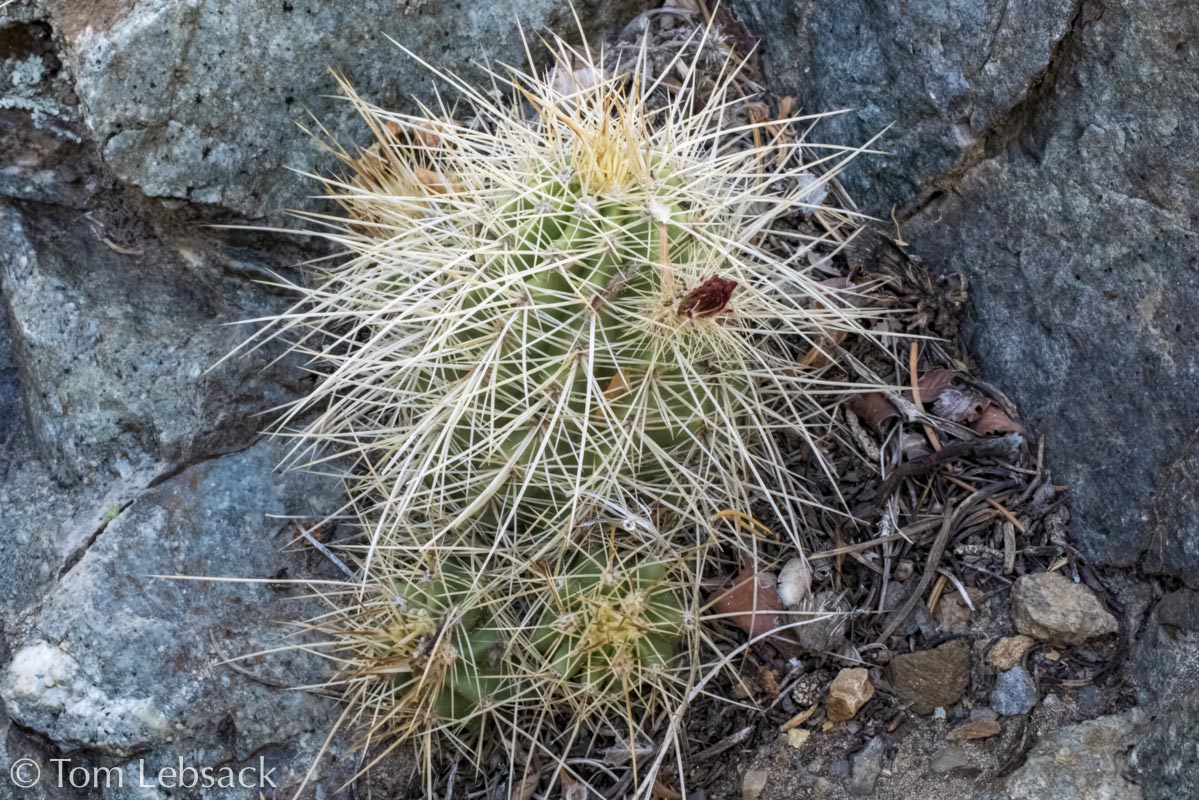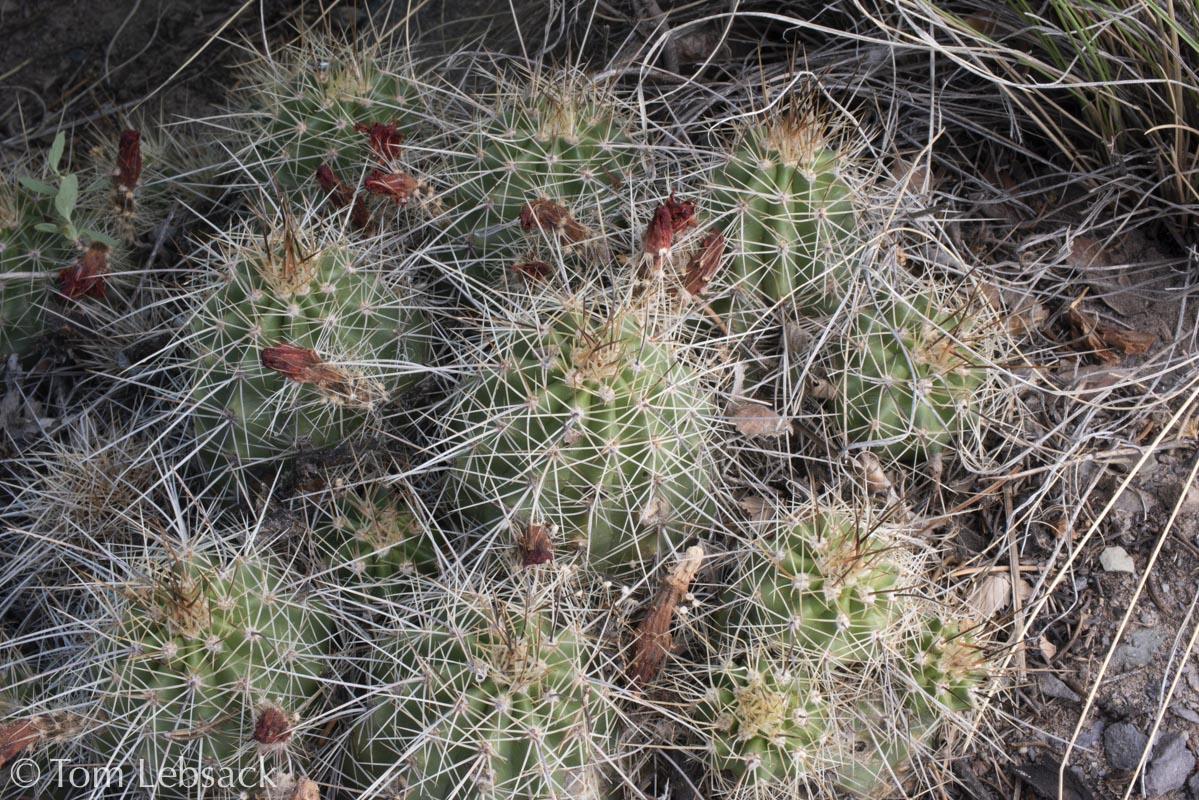Echinocereus coccineus ssp. coccineus
(Scarlet Hedgehog Cactus)
| Scientific Name | Echinocereus coccineus ssp. coccineus (E. c. var. coccineus) | USDA PLANTS Symbol | ECCOC |
| Common Name | Scarlet Hedgehog Cactus | ITIS Taxonomic Serial No. | 912679 |
| Family | Cactaceae (Cactus) | iNaturalist Reference |
Click Here |
| Description | Life zones and habitat: Plains and foothills (5000 to 7000 ft.); dry, gravelly, sandy soils in open areas, canyons and hillsides. Plant: Single erect stems growing between boulders and in rock cracks, or in mounds up to 40 inches across with 5 to 100 densely spiny, cylindrical stems. Stems & Spines: Stems 2 to 8 inches tall and up to 3 inches in diameter with 6 to 14 ribs; relatively closely-spaced (3/8 to 3/4-inch) areoles with 0 or 1 central spine per areole, 1 to 3 inches long and 4 to 13 radial, spreading spines 3/16 to 1-1/2 inches long; spines are usually round in cross-section and mostly straight, white to yellow, reddish-brown or black, often dark tipped. Inflorescence: Cup-shaped flowers arising from the sides of the stems, 1 to 2-1/2 inches across with red, crimson, or scarlet (rarely orange-red or rose-pink) tepals with bases sometimes being whitish or yellowish; central style with greenish stigma lobes; pink to purple anthers clustered at base of style; plants are dioecious with male and female flowers on different plants. Bloom Period: May and June. Fruit: On female plants cross-pollinated by male plants; egg-shaped fruit, 3/4 to 1-1/2 inches long, greenish or yellowish to pinkish becoming red, with white pulp; with clusters of tiny spines until ripe. References: "Flora of Colorado" by Jennifer Ackerfield, Flora of North America, Southwest Desert Flora and Wildflowers of New Mexico. |
BONAP Distribution Map Map Color Key Map Color Key |
Texas Status: Native |
© Tom Lebsack 2025
Banner photo: Castilleja rhexifolia and a brewing storm over the San Juan Mountains
I try to provide accurate, up-to-date, and relevant information, but cannot guarantee the completeness or accuracy of any information presented on this website. I use authoritative references to insure high standards of accuracy and review and update the information frequently.




